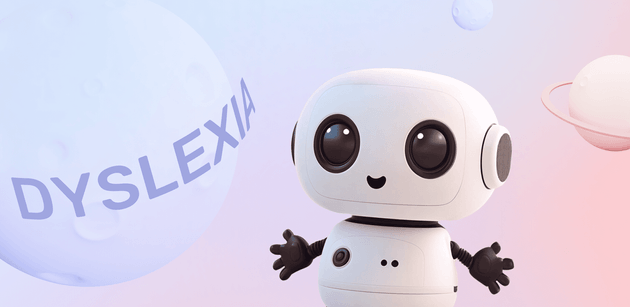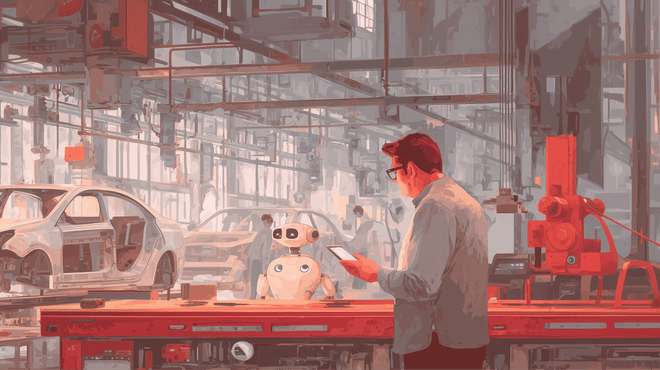One of the biggest challenges in modern education is addressing the diverse needs, backgrounds, and learning speeds of students – often summarized as “learner diversity.” For teaching to be effective, this diversity must be recognized and supported through individualized instruction.
This is exactly where adaptive learning comes in. Instead of offering the same content to everyone, adaptive systems analyze performance, predict learning needs, and adjust the pace, difficulty, and type of support in real time.
In this article, we explore what adaptive learning is, why it matters, and how adaptive learning software can meaningfully enhance individual support in the classroom.
Why learning paths need to be adapted
Teachers aim to provide deep knowledge to all students. However, it’s challenging to give personalized support to over 30 pupils at once in a class – and probably a few hundred on a learning platform. For individualized learning, students need timely, detailed feedback and guidance, which requires alternative methods beyond traditional classrooms.
Let’s look at the core traditional education problems, and the need for adapting learning paths will become clearer.
1. Memorization vs. critical thinking
Our education system relies on a lot of memorization and then testing it in standardized exams. Even today, students sometimes acquire detailed knowledge in individual subjects without understanding the connections.
What will be much more important in the future are skills often neglected in conventional classrooms: critical thinking, practical problem-solving, and creativity. These skills can only be developed through a tailored approach to students.
2. The same learning method for everyone
We know that students have individual strengths and weaknesses and that the learning speed can vary greatly. However, the traditional education system only promotes a very specific type of learner. Many students and their talents fall by the wayside in this system.

Digital and AI tools can truly personalize learning: AI-based adaptive systems adjust content, pace, and feedback in real time to match each student’s needs. A 2025 research showed that students using these tools not only learn more effectively but also stay more engaged than those in traditional classrooms.
3. Outdated curricula
In many public schools, curricula, and teaching methods haven’t changed in decades. Although attempts have been made to respond to technological progress, our curricula still contain shockingly little content on digitization topics – which, however, are increasingly vital to strive in our technology-driven world.
4. Special needs
Given the curriculum standards, traditional educational programs may hinder the unique profile of students’ strengths, weaknesses, interests, and motivations. But more importantly, a special need or disability may hold the student back in various ways.
For learners with special needs, mental and physical disabilities, learning outcomes can be improved through personalized and differentiated support. Adapting the pace, level, and complexity of instruction and assessment is the key to equal opportunities so that all students are neither under- nor over-challenged.

The reasons listed above show clearly: it is time to stop adhering to outdated learning methods only. These methods have to be augmented by state-of-the-art adaptive learning technologies, which we’ll go over right now.
As evidence of why adaptive learning paths matter, a study comparing AI-based adaptive programming education to a traditional, non-adaptive curriculum showed that dynamic personalization proved far more effective.
Dynamic/adaptive instruction (AI-based)
The experimental group (EG) that received AI-driven adaptive instruction achieved an average learning gain of +2.0 points, with a large effect size (d = 1.40). Key adaptive features included real-time performance monitoring, content and task difficulty adjustments, and instant, personalized feedback.
Static curriculum (traditional)
The control group (CG), following a uniform, non-adaptive curriculum with static resources, showed an average learning gain of +1.0 point, with a moderate effect size (d = 0.74).
The AI-based adaptive environment also significantly boosted engagement across behavioral, emotional, and cognitive dimensions, outperforming the non-adaptive approach in supporting both learning outcomes and student motivation.
What is adaptive learning in education?
Adaptive learning in education is a technology-driven approach that delivers personalized learning experiences by tailoring programs to each student’s prior knowledge, learning pace, and ongoing performance.
These platforms continuously adjust content and assessments based on real-time data to optimize understanding and engagement. With the adaptive learning market expected to hit $5.47 billion by 2032, it’s clear that educators and trainers are increasingly investing in platforms that can personalize learning for every student and employee.
Adaptive learning’s framework has to include various aspects:
- Policy-making (establishing guidelines for personalized learning paths)
- Curriculum formulation (designing flexible and adaptable content)
- Teacher training (equipping educators to use adaptive technologies)
- Assessment and testing (using data-driven, personalized evaluations)
In practice, it means providing specific feedback, tailored instruction, continuous adaptation, and flexible learning sequences to achieve a high level of personalization. The approach to each student entails:
- constant self-evaluation of the teacher’s actions
- regular assessment of learning progress
- close student-teacher exchange (coaching)
- graded difficulty level of the materials
- individualized learning settings
- targeted learning as a basis
Typically, learning objectives are achieved by learners through pathways that lead from basic knowledge to more advanced information. To make these pathways standardized, Web Content Accessibility Guidelines were created. Check out our in-depth article on how WCAG helps to make content accessible.
Benefits and challenges of adaptive learning
Adaptive learning platforms powered by data mining carefully craft teaching or training materials tailored to the individual needs of each student.
Their benefits can be divided into three categories: for students, teachers, and online education providers.
1. Benefits for students
- Personalized interaction with content: Access issues often stem from poorly designed environments. Adaptive learning allows students to interact with course materials in ways that best suit their individual preferences, with diverse formats available, enhancing motivation and promoting personalized learning experiences.
- Reduced overwhelm and cognitive load: Adaptive learning breaks content into manageable steps and limits unnecessary information, helping students who often feel lost, overloaded, or unsure where to start.
- Targeted support for learning gaps: Instead of pushing students forward with unresolved misunderstandings, adaptive systems detect specific gaps (like confusion about a concept or repeated errors) and address them immediately, preventing frustration and buildup of learning difficulties.
2. Benefits for teachers
- Supporting special educational needs: AI-driven tools simplify support for students with special educational needs by automatically adjusting content difficulty, formats, and structure. This removes the burden of manual adaptation and frees teachers to focus on teaching, not formatting.
- Clear visibility into student struggles: Instead of relying on guesswork or time-consuming manual checks, adaptive platforms highlight exactly where students are getting stuck, allowing teachers to intervene earlier and more precisely.
- Less time spent rewriting or reorganizing materials: Adaptive systems handle much of the content adjustment automatically, reducing the constant cycle of reformatting lessons, creating multiple versions, and personalizing tasks by hand. This frees teachers to focus on meaningful student interaction rather than administrative overload.
3. Benefits for educational businesses
- Cost-effective learning process: Adaptive learning reduces the need for traditional textbooks and resources by offering customizable digital materials. Thus, it lowers overall spending for end-users and widens the platforms’ audience.
- Inclusive access to learning materials: Providing knowledge to students of any age and skill level is a key feature of educational platforms. Adaptive features like offering content in different formats make learning more inclusive, meeting learners where they are – regardless of background or ability.
- Enhanced course outcomes: Higher success rates from personalized learning experiences can improve the credibility and attractiveness of the platform, driving more enrollments.
As with any innovative technology, there are also a few challenges that may hinder the implementation of AI-based adaptive learning systems.
- Limited interpretability of AI models. Complex AI systems, particularly those using deep learning, often act as “black boxes,” making it difficult for educators and students to understand or validate automated decisions. However, implementing Explainable AI (XAI) frameworks can improve transparency and trust, as demonstrated by a 30% increase in educator trust ratings.
- Cataloging and assessment of digital materials. Educational institutions need to conduct a comprehensive inventory of their existing digital materials to ensure compliance with accessibility standards. Without prior preparation, this process can be resource-intensive and time-consuming.
- Community-specific accessibility needs. Districts must identify and prioritize the accessibility needs of various community members, including students, teachers, staff, and families. Such an approach requires understanding the diverse challenges faced by each group.
- Lack of personal instructors. Adaptive learning systems rely heavily on technology rather than personal instructors. This can reduce personalized guidance that learners may need, potentially impacting the learning experience negatively.
- Isolation in learning. Since adaptive learning focuses on individualization, it can lead to a lack of community and collaboration among learners. The lack of spontaneous exchange and peer learning can decrease motivation and engagement.
What is adaptive learning technology?
Adaptive learning technology may sound abstract, but under the hood, it’s powered by a combination of machine learning, analytics, and smart orchestration layers that continuously react to how a student learns.

These layers constantly collect interaction data: task completion times, click patterns, error logs, quiz results, engagement drops, and even the order in which content is accessed.
This data typically flows through an event-tracking pipeline (often implemented with tools such as xAPI, LRS storage, or native LMS analytics modules), so every action a learner takes becomes usable input for adaptation.
To better understand this approach, what are some examples of adaptive learning in action?
1. Performance analysis with machine learning
Once data is captured, machine learning (ML) models are applied to interpret learner performance. Common techniques include:
- Bayesian Knowledge Tracing (BKT): predicts how well a learner has mastered specific skills.
- Deep Knowledge Tracing (DKT): uses neural networks to provide more nuanced predictions of learner progress.
- Clustering algorithms: identify common stumbling blocks or learner profiles.
- Predictive analytics: flags students at risk of disengagement or failing specific concepts.
This system enables continuous, automated assessment without requiring manual review by trainers, allowing personalized learning paths and real-time performance insights to be delivered at scale.
In one deployment, Aristek Systems added an adaptive learning engine to a manufacturer’s LMS to enhance talent development. The module used machine learning to evaluate employee performance, personalize assessments, and automatically adjust content difficulty.
Supported by lightweight RAG-based retrieval for context-aware recommendations, the solution enabled continuous skill monitoring and more efficient learning cycles. It also integrated cleanly with the company’s established training infrastructure.
2. Adaptive instructional response
Adaptive instructional response refers to the automated adjustment of learning content and activities based on a learner’s performance data. Core adjustments may include:
- Difficulty of tasks: Increasing or decreasing the complexity of exercises to match learner proficiency.
- Pacing: Modifying the speed at which content is presented.
- Order of modules: Reorganizing topics or units according to learner progress and needs.
- Style or depth of explanation: Providing more detailed, simplified, or varied explanations.
- Level of scaffolding or hints: Adjusting the amount of support or guidance offered.
Modern adaptive learning platforms often employ Natural Language Processing (NLP) models to dynamically rewrite explanations, generate additional examples, or simplify concepts. Educational Data Mining (EDM) techniques detect patterns of difficulty or misunderstanding and trigger targeted interventions, such as practice prompts or micro-guidance.
Aristek Systems implemented an AI-driven Q&A assistant for a K-12 learning platform, designed to deliver real-time academic support and reduce routine teacher workload.
Using a streamlined data pipeline, a unified knowledge base, and RAG for context-aware responses, the system scaled to over 1,000 requests per minute.
The impact was substantial: exam pass rates rose by ~18%, study plan completion increased by 32%, learner satisfaction reached 89%, and support ticket volume dropped by 27%.
3. Human-in-the-Loop (HITL) AI for refinement
Newer adaptive systems combine generative AI with expert feedback – a structure known as Human-in-the-Loop (HITL) learning. Here’s how it works:
- AI generates explanations, tasks, or learning materials.
- Teachers or instructional designers review the AI output and provide feedback or corrections.
- Feedback is fed into the model via a Unified Prompt Template, improving the accuracy and quality of future content.
- A RAG system retrieves relevant materials (textbook excerpts, teacher notes) to generate better-tailored explanations or tasks.
This creates a “co-adaptive” loop where educators guide the system, while student interactions can provide supplementary signals to further refine AI outputs in real time. HITL adaptive learning in STEM shows that combining AI with student feedback and teacher oversight boosts engagement and learning outcomes over AI-only methods.
Expanding on this methodology, Aristek Systems deployed an AI highlights generator for a U.S.-based eLearning provider to streamline content summarization within their LMS. The system automatically analyzed videos, audio, and text to produce concise, key-point summaries.
Educators could review and refine the generated highlights, ensuring accuracy and alignment with teaching objectives, while learner interaction data helped continuously improve the content.
The solution cut content creation time by 70%, reduced update costs by 75%, saved students 60% of review time, and allowed teachers to focus on assessments and personalized instruction.
4. Personalization via learner profiles
Before learning even begins, adaptive platforms often run an onboarding assessment to capture:
- Prior knowledge
- Learning goals
- Preferred modes (text, visual, step-by-step, problem-first)
- Self-reported confidence levels
- Accessibility needs
The system uses these static attributes alongside dynamic real-time data to build a richer learner profile.
Some platforms even incorporate IEP data (individual education plans) or accommodations via SIS connections to ensure inclusive adaptation. This level of personalization boosts learner engagement and is particularly beneficial for under-resourced or special-needs students.
Aristek Systems built an AI admissions coach for a U.S. EdTech platform supporting SAT, ACT, and college application prep. The module integrated directly into the React frontend and used lightweight Python microservices on AWS (Lambda, SageMaker, Glue) for training, inference, and data processing.
Results included a 22% boost in student retention, a 38% increase in SAT course completion, a 30% reduction in support tickets, and an 8-12% rise in college enrollment among users.
5. AI-powered tutoring systems
Many modern adaptive learning platforms incorporate AI-powered tutoring systems to enhance individualized learning. These systems typically provide the following capabilities:
- Auto-generation of quizzes and flashcards.
- Step-by-step guidance for complex tasks or exercises.
- Answers to free-form questions.
- Multi-level explanations tailored to a learner’s proficiency.
- Generation of practice exercises aligned with identified knowledge gaps.
These features aim to reduce cognitive load, support self-paced learning, and facilitate exam preparation in online or blended learning environments.
Aristek Systems deployed an AI certification coach for a global digital certification provider, embedding adaptive guidance into the client’s LMS. The system used historical exam data and learner activity logs to generate readiness scores, personalized study plans, and micro-guidance.
Integrated via Python microservices on AWS Lambda, the AI assistant provided reminders, progress tracking, and certification updates.
As a result, learners not only improved their exam pass rates by 18% and completed 32% more study plans, but they also reported higher confidence and satisfaction, while administrative workload dropped by 27%.
Taken together, these examples show that adaptive learning technology isn’t a single feature but an ecosystem of AI-driven components working together. Effective adaptive systems rely on data pipelines, machine learning models, content orchestration, and real-time decision-making – all operating inside a broader digital learning environment.
In most modern implementations, this environment is essentially an AI-powered LMS. The LMS provides structure, content delivery, and tracking, while AI layers add the intelligence needed for personalization.

As these technologies mature, the line between a “learning platform” and an “adaptive AI system” has nearly disappeared. They’ve been replaced by cohesive, intelligent environments designed for personalized education at scale.
Today, an adaptive learning platform is a digital system that personalizes education by continuously analyzing a learner’s performance, engagement, and context. It dynamically adjusts content, pacing, and support to match individual needs.
Core to these platforms are modular personalization components that consider prior knowledge, learning style, and real-time interactions. By combining flexible instructional design with AI-driven insights, adaptive platforms improve understanding, engagement, and learning outcomes across schools, universities, and organizations.
Ideally, an adaptive learning platform can:
- Suggest courses and learning programs tailored to a learner’s prior knowledge and existing skills.
- Offer personalized support, for example, through real-time feedback or AI-based guidance.
- Send learning reminders, either automated or triggered by instructors or administrators.
Modern platforms typically provide multiple learning methods and formats while being technically barrier-free – accessible to learners anytime, anywhere. The greater the diversity and variability of e-learning options, the more effectively adaptive learning can be integrated into broader learning strategies.
Implementing adaptive learning software: where to start
What does the concrete implementation look like? The key lies in AI, which individually adapts the corresponding learning formats of adaptive learning in real time. Two factors play a decisive role here.
1. Anonymized data of all previous participants
Anonymizing data ensures that the personal information of learners is protected while allowing AI to analyze trends, behaviors, and outcomes from a large pool of participants. This is crucial for identifying learning patterns and making real-time adjustments without compromising privacy.
Customized open-source or proprietary AI models can be developed and fine-tuned to meet specific learning objectives, all while being hosted on the client’s servers. Such solutions allow for more precise personalization and adaptation to individual learner needs, while also providing flexibility in integration with existing systems and ensuring room for future growth.
We have previously covered the importance of AI compliance and how it is regulated – take a peek to better understand how to comply with data privacy principles when implementing AI-based technologies.
2. Independent AI learning
Based on different decisions and behaviors, the learners are provided with different content. Typical parameters for improving teaching strategies and adapting classrooms include:

3. Seamless system integration & real-time data flow
For adaptive learning software to truly shine, it needs to blend smoothly into the digital learning environment that institutions already use. That means integrating the AI engine with LMS platforms, Student Information Systems, and other learning tools.
Using standards like LTI, xAPI, or SCORM, the AI can continuously gather information – from quiz results to time-on-task – and turn it into personalized learning paths without interruption. When the integration layer is strong, the adaptive engine gets the full picture and can react in real time.
Key integration-related parameters include:
- API stability and data sync speed so that AI will receive learner data with minimal delay.
- Compatibility with common LMS platforms like Moodle, Canvas, or Google Classroom.
- Consistent data formats , so the AI can easily interpret and act on incoming information.
Last but not least, this factor helps the adaptive system feel like a natural part of the existing ecosystem and scale effortlessly as needs grow.
In a nutshell
The heart of adaptive learning as a method is making knowledge accessible to students and equalizing their learning opportunities. And given today’s diverse needs in education, the more personalized one’s path is, the fuller one’s potential is developed.
With a fundamental principle in mind that promotes equity, diversity, and inclusion in learning environments, the Aristek team can help you incorporate adaptive learning tools, no matter what your starting point is. Just drop us a line!





